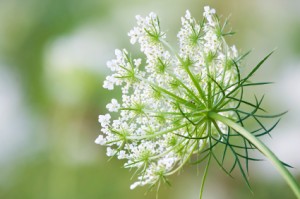Ammi
Ammi majus is the most commonly occurring variety of Ammi and its common names include bishop’s week, bullwort, laceflower and Queen Anne’s lace. Ammi is popular as a garden plant and is used by gardeners to fill foliage space and create a cohesive flower bed.
Description
When Ammi varieties flower, they do so in large umbrellas carrying hundreds of small, often white flowers. The stems and flowers are rugged and fern-like, defying their delicate appearance by being hardy and tough. Ammi tends to have very little scent, if any at all.
Habitat
Ammi has its origins in the warm climate of the Mediterranean, but its popularity amongst gardeners has led to cultivation in countries like Israel, the Netherlands and the United Kingdom.
Availability
Ammi tends to flower during the height of summer, although many varieties are available all year round from certain stockists.
Species
Ammi is a genus in the Apiaceae family of plants, and it has been studied as a potential ingredient in the treatment of various medical conditions. The most commonly occurring species are Ammi Visnaga and Ammi Majus.
Care Tips
Ammi majus enjoys full sun, and is versatile enough to grow in loamy, sandy or chalky soils, as long as they are well drained. Ammi tends to grow best when propagated by seed sown in situ in spring.
Did You Know?
Ammi was used in Ancient Egypt to treat skin conditions.
Resources
http://www.gardenguides.com/69394-grow-bishops-weed.html
http://en.wikipedia.org/wiki/Ammi_majus



